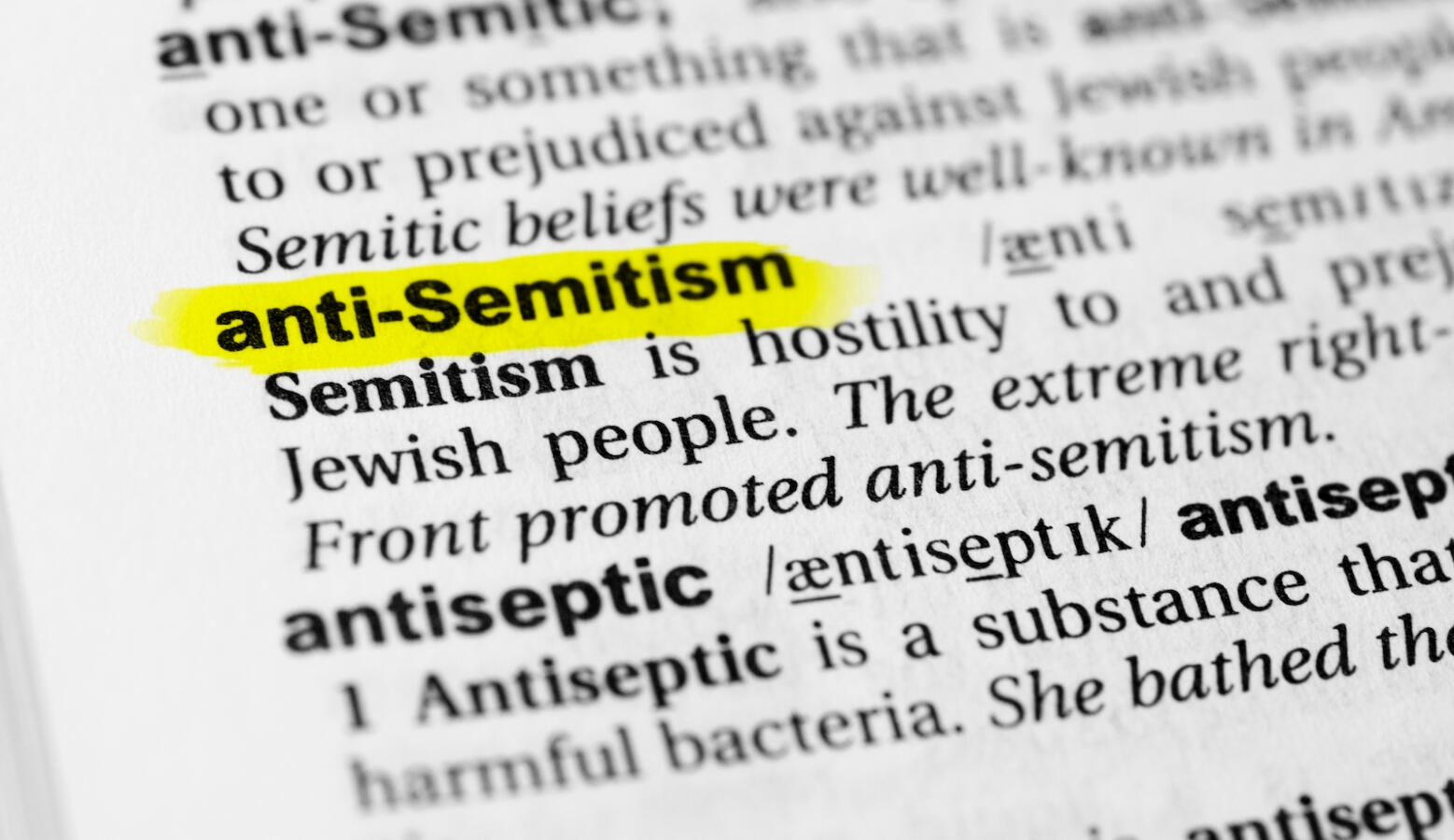Hatred of Jews has been a feature of world history for centuries. But only in the late 19th century did a new specific word emerge to describe it.
What prompted the coining of the neologism “anti-Semitism” was the perception of an altered relationship between Jews and the peoples among whom they lived that could not accurately be described as mere “Judeophobia” or “Jew-hatred.” The felt need for a new word affected not just self-identified anti-Semites. It was recognized by Jews and non-Jews throughout Europe and wherever Europeans settled in the world.
Anti-Semitism, as a concept and a movement, was a response to the so-called Jewish Question, which was itself precipitated by the remarkable economic, cultural and political ascent of the Jews during the 19th century and their entry into mainstream European life. For some of the peoples among whom they lived, this rapid accumulation of power was ominously threatening. Accustomed to seeing Jews as small-time chiselers, heretics, peddlers, and parasites, they were now confronted by Jewish political leaders, cultural luminaries, bankers, captains of industry, army officers, professors, and bosses. No longer powerless outsiders, Jews were seen as wielders of surreptitiously acquired power.
Seeing only the dramatic success stories, this view ignored the thousands of still impoverished Jews dwelling in Eastern Europe and in the slums of central and western European cities. Nevertheless, it was the fear of what Jews would do with their wildly exaggerated power that animated efforts to disempower them before it was too late — first in Germany, and then in many other countries. Conservative Christians, disaffected democrats, former liberals, nationalists, cultural critics, thwarted academics, and visionary social reformers took action against the Jewish enemy in a variety of ways. Some, though certainly not all, were convinced that a mass movement organized on the basis of Jew-hatred was the best way to proceed — assuming, probably correctly, that the great majority of their countrymen harbored some degree of resentment, suspicion, or disdain for Jews.
With your help, My Jewish Learning can provide endless opportunities for learning, connection and discovery.
The term anti-Semitism emerged to describe these efforts. In Germany, Wilhelm Marr, if not the coiner of the word then certainly one of its major early popularizers, thought of himself as a modern man, a student of history and science. Anti-Semitism allowed him to distinguish the party he launched in late 1879 — the Antisemites’ League — from the religious bigotry of medieval Jew-hatred. Like many (but not all) who shared his goals, Marr defined the Jewish Question as one of race, not religious deviance. In the past, persecution had been episodic; outbursts of terrible violence alternated with long periods of quiet relations between Jews and their neighbors. In Marr’s view, such lackadaisical Jew-hatred had allowed Jews to grow stronger and, in fact, launch plans for conquest of the non-Jewish world. Mere religious prejudice had failed to halt their rise. The Jews had become too powerful, too entrenched in society, to be beaten back by the occasional pogrom.
Take a deep dive into the roots and reach of anti-Semitism. Sign up for “The Longest Hatred,” our nine-part email series, here.
Anti-Semitism rejected these errors of the past. What was needed was disciplined and systematic struggle, nothing less than the institutionalization of anti-Semitism in political parties, grassroots organizations, lobbying agencies, newspapers, learned journals, and a variety of voluntary associations Action would be buttressed by modern mass media and new technologies, by unceasing agitation. Anti-Semites had to be prepared for the long struggle which was to continue for as long as it took to solve the Jewish Question. Whether Marr’s contemporaries wished to admit it or not, the modern world was engaged in a race war, a war that could not have a peaceful end.
While many agreed with Marr’s goals and methods, the term anti-Semitism itself was never wholly embraced. Some found it too evasive, others too pseudo-scientific. The German philosopher Eugen Duhring (1833-1921) objected to its avoidance of naming the enemy directly. It was also seen as too imprecise. Not all Semites were deemed inimical. For example, when Nazis sought Arab allies before and during World War II, they found it advisable to disavow use of the term in propaganda directed at the Middle East, reassuring potential allies that Arabs were a noble race. Even today, Arabs — Semites themselves — object to being associated with the Jewish Question. Others, quite hostile toward Jews, claim that because they are Semites, they cannot be accused of anti-Semitism.
Another source of controversy that adheres to the term, even today, is its correct orthography. Should it be anti-Semitism or antisemitism?
The issue is with the word Semitism. The word emerges from the study of languages, and may have once been a reasonably neutral description of the peoples and cultures of the Middle East, essentially just a means of distinguishing language groups. But those who favor antisemitism over anti-Semitism note that the term Semitentum, usually attributed to the German Enlightenment thinker A. L. Schlozer (1735-1809), was polemical from birth, invented to establish a polarity between superior white Christian cultures and those of the inferior Orient. By the time the word was appropriated by critics of the Jews, however, it had lost even a semblance of neutrality. Semitism came to signify a bundle of uniformly negative traits.
Placing “anti” and a hyphen in front of a word typically results in its opposite. But anti-Semitism is essentially a synonym of Semitism. As a result, it’s now commonplace in academic circles to drop the hyphen. The noted Holocaust historian Deborah Lipstadt has championed the change, saying the use of the hyphen “completely distorts the meaning of the word.” The Anti-Defamation League and the International Holocaust Remembrance Alliance have dropped the hyphen. However, the change is far from universal. The Associated Press, the standard bearer of journalistic style, continues to use the hyphen, as do many major news outlets, including The New York Times and the Wall Street Journal. The Merriam-Webster dictionary and the U.S. State Department also continue to use a hyphen.
Editor’s Note: Like many academics, the author of this piece prefers to render the term “antisemitism” without a hyphen. At the time of publication, the AP Style Guide continues to call for the hyphenated version, which My Jewish Learning has elected to follow.



